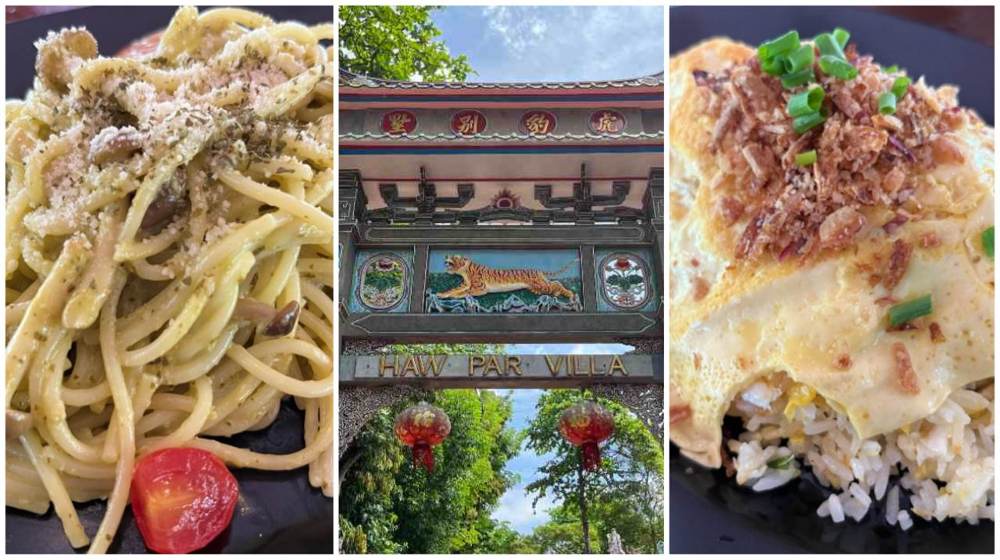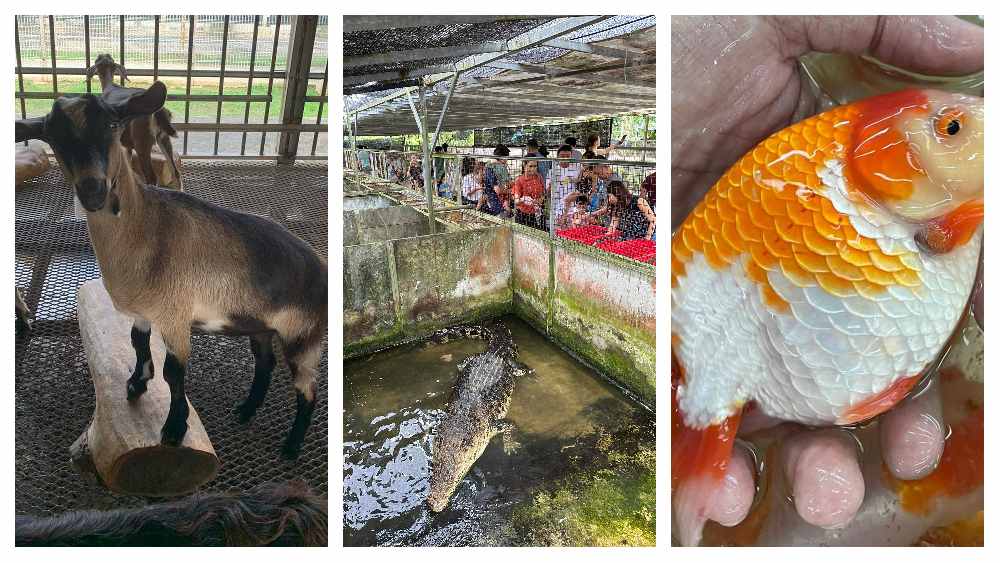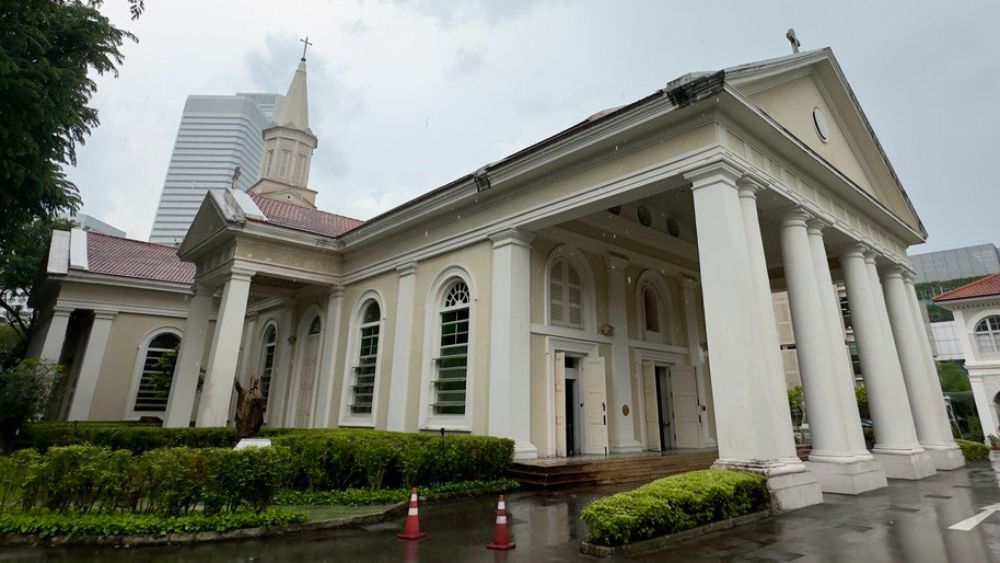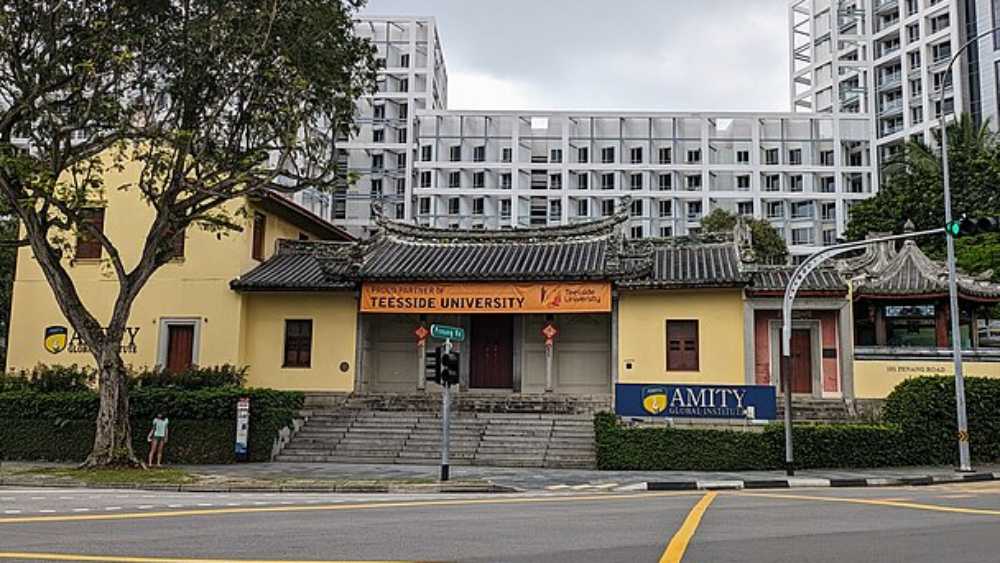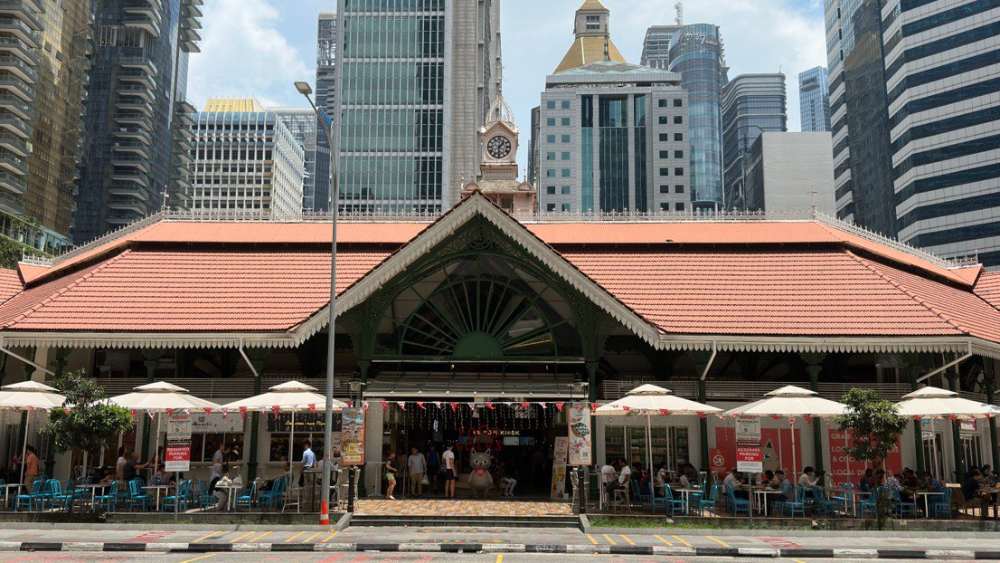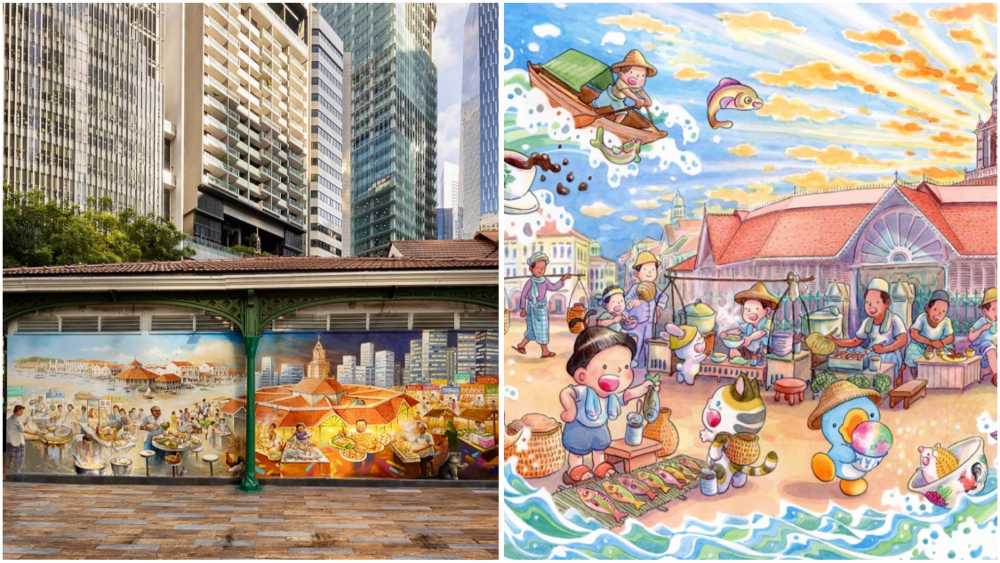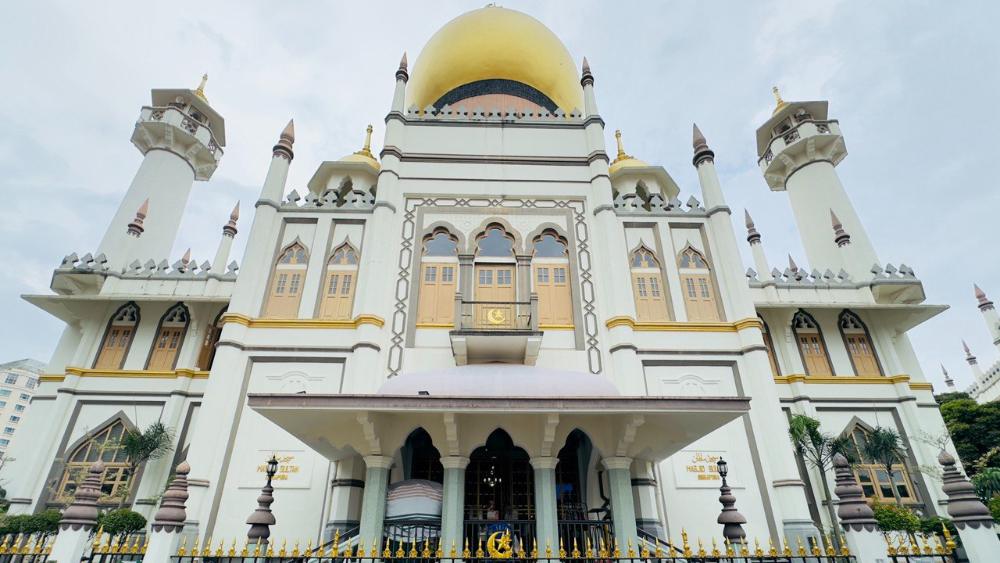National Monuments Of Singapore: Cathedral Of The Good Shepherd
What is a National Monument? Who gazettes them? How many national monuments are there in Singapore? To date, the Preservation of Sites and Monuments, a division of National Heritage Board, has identified and gazetted 75 buildings, structures and sites of national significance as an integral part of Singapore’s built heritage.
And we're here to tell you all about them - one National Monument at a time!
You've probably passed by or stepped into more than a few of them without realising they were National Monuments: Al-Abrar Mosque, Asian Civilisations Museum, the Civilian War Memorial, Saint Andrew's Cathedral, the Esplanade Park Memorials, Fort Siloso on Sentosa - no need to plan an itinerary for friends visiting from overseas; just show them this article ✌️
In this edition, we spotlight the oldest Catholic church on our little Red Dot, the Cathedral of the Good Shepherd.
📍 Location
The Cathedral of the Good Shepherd was the 8th building to be gazetted as a National Monument. Located near other National Monuments such as Maghain Aboth Synagogue, Saint Joseph's Church, and Church of Saints Peter and Paul, the MRT stations nearest to the Cathedral of the Good Shepherd are Bras Basah and City Hall.
📅 Significant dates
Dates built:
- 18 Jun 1843: The foundation stone was laid by John Connolly, a merchant resident in Singapore
- 6 Jun 1847: The church was blessed and opened by Father Jean-Marie Beurel
Milestones:
- 1888: The church was raised to the status of a cathedral
- 14 Feb 1897: The Bishop of Malacca, Reverend René Fée, consecrated the church
- 2013-2016: The cathedral underwent a major renovation
Date gazetted: 28 Jun 1973
📜 History
The history of the Catholic Church in Singapore began soon after Singapore was established as a British trading port in 1819, when European Catholics arrived on the island. These early Catholic pioneers worshipped in private homes until a small chapel made of wood and attap was erected on the site of the Former Saint Joseph’s Institution (today’s Singapore Art Museum).
The structure was allotted to Father Jean-Baptiste Boucho (a French missionary who had come from Penang). However, the chapel quickly proved to be too small for the rapidly expanding Catholic congregation.
Soon after, MEP (short for "Société des Missions Etrangères de Paris" or "Society of Foreign Missions of Paris", a Catholic missionary organisation) Reverend Father Jean-Marie Beurel, successfully obtained a plot of land from the government to build a church.
A subscription drive was launched to raise funds for the building project. Donations streamed in from both the local Catholic community as well as Catholics abroad. The latter included Maria Amalia of Naples and Sicily who was then the Queen of France, and the Irish Archbishop of Manila Michael J. O’Doherty.
The construction of the first permanent Catholic place of worship in Singapore commenced with the laying of the foundation stone on 18 Jun 1843. Father Beurel blessed the newly completed church on 6 Jun 1847.
Prior to the construction of other Catholic churches in the vicinity, such as the Church of Saints Peter and Paul, Catholics from different races congregated and worshipped in the Church of the Good Shepherd. On 14 Feb 1897, the church was consecrated by Bishop of Malacca René M. M. Fée, MEP, having been elevated to the status of a cathedral in 1888.
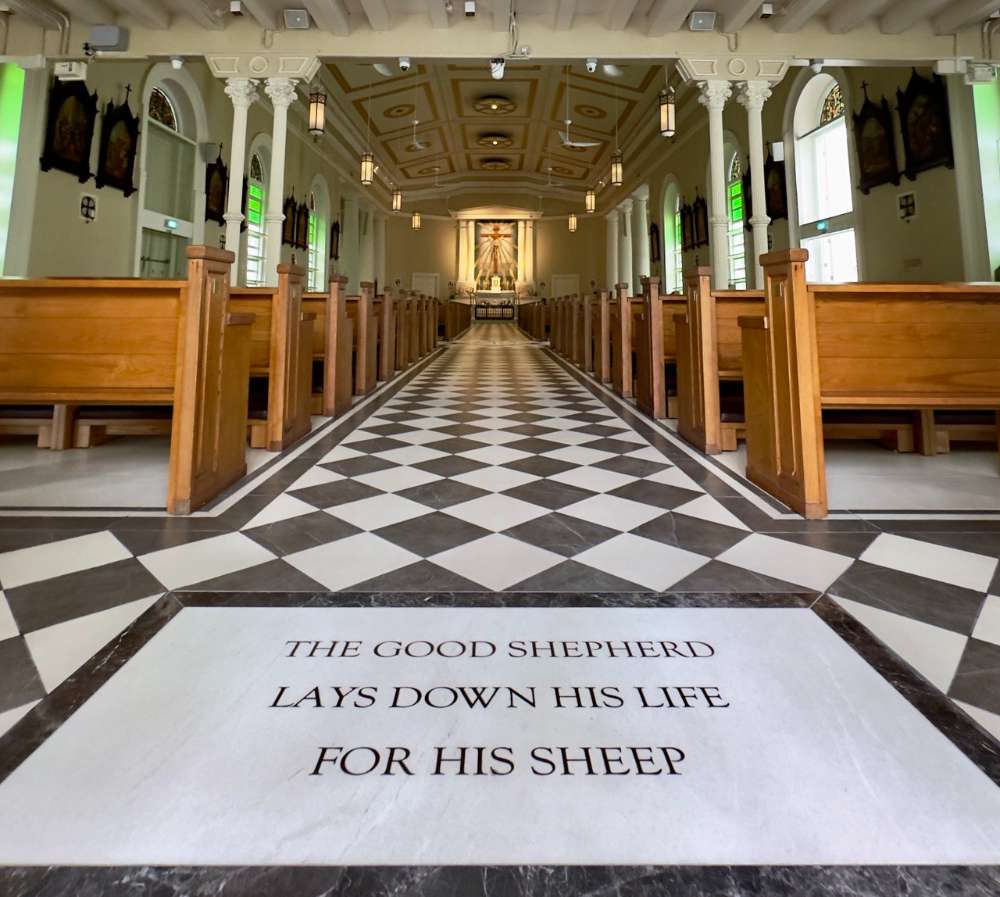 IMAGE: NG KAI
IMAGE: NG KAI
The dedication of the church to the Good Shepherd, a depiction of Jesus Christ in the Gospel, has been attributed to an MEP bishop-martyr, Saint Laurent-Joseph-Marius Imbert. It is believed he was one of the first priests to visit Singapore, while en-route to Joseon (Korea today).
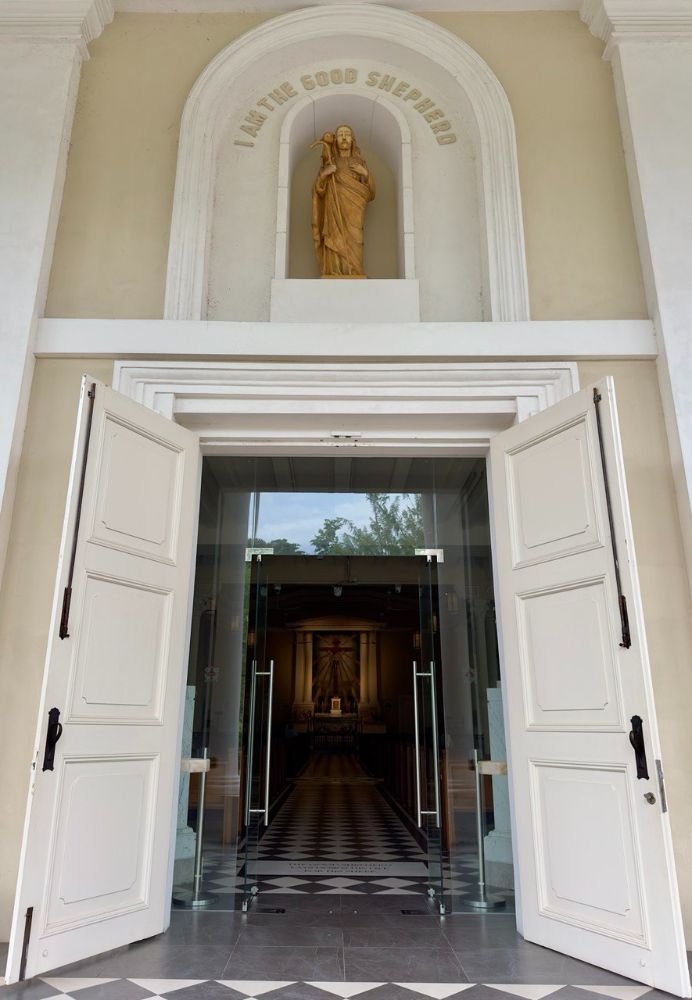
IMAGE: NG KAI
During the persecution of Catholics in Joseon, Bishop Imbert was betrayed and arrested by the local authorities. He penned a note to his fellow priests shortly before his martyrdom to encourage them to surrender themselves to the officials, so as to prevent the extermination of the Korean Catholic population. The note read: "In desperate circumstances, the good shepherd lays down his life for his sheep." He was beheaded in 1839, along with his missionaries.
When news of the Korean martyrs reached Singapore, it inspired Father Boucho and Father Beurel to name the newly built church after the Good Shepherd.
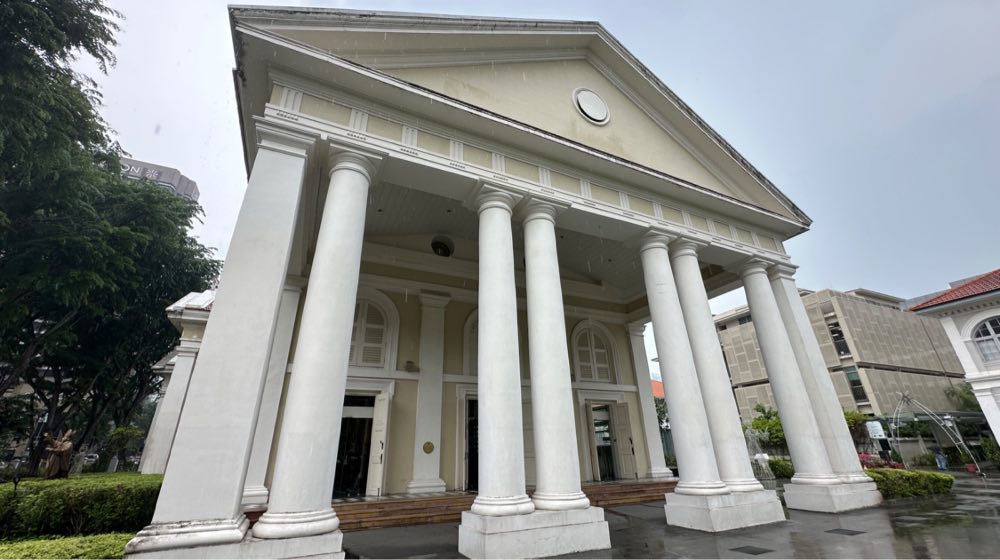 IMAGE: NG KAI
IMAGE: NG KAI
📐 Design and architecture
Designed by Denis L. McSwiney, the present main edifice was built in the Renaissance style, with the traditional cruciform plan and Roman Doric pillars. The architecture was inspired by two well-known churches in London (Saint Paul’s Church and Saint Martin-in-the-Fields). While the cathedral adopted the Roman Tuscan features of the former, it derived its temple-like proportions and design of the belfry from the latter.
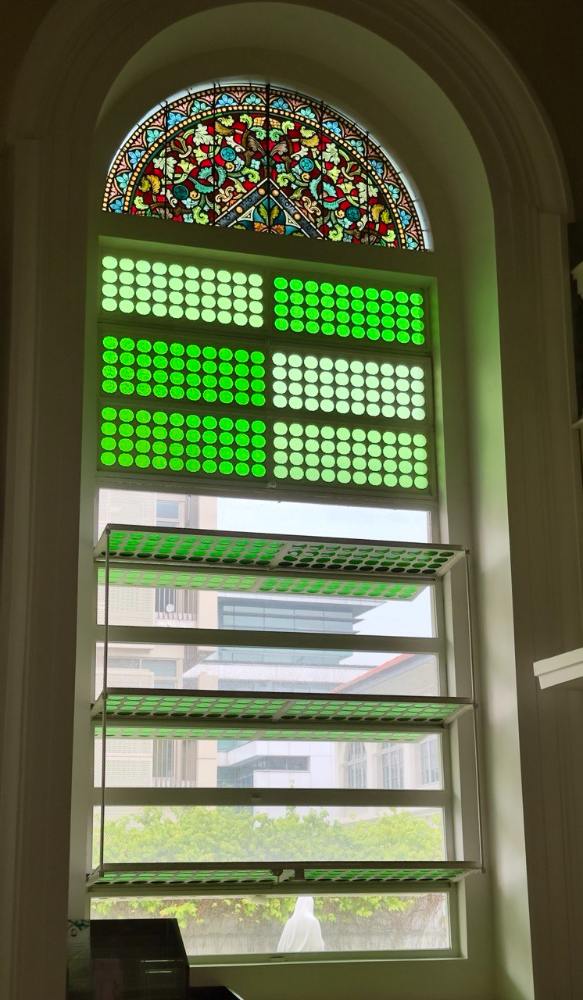
IMAGE: NG KAI
Above the entrance doors and windows of the cathedral are beautiful stained-glass panels.
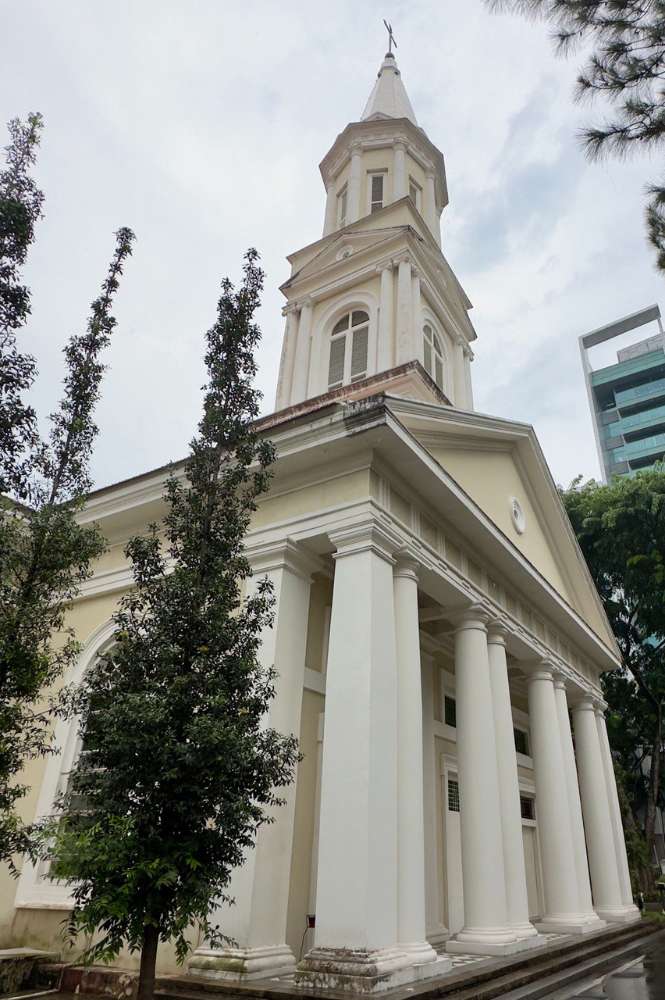
IMAGE: NG KAI
The cathedral steeple was erected in 1847, following the design of Charles A. Dyce, a renowned Scottish artist. He had modelled it after John Turnbull Thomson's design for the steeple added to the Saint Andrew's Church.
Good Shepherd's steeple has three distinct sections: a rectangular cuboid base, an octagonal mid-section, and a six-sided conical top. A cross surmounts the steeple.
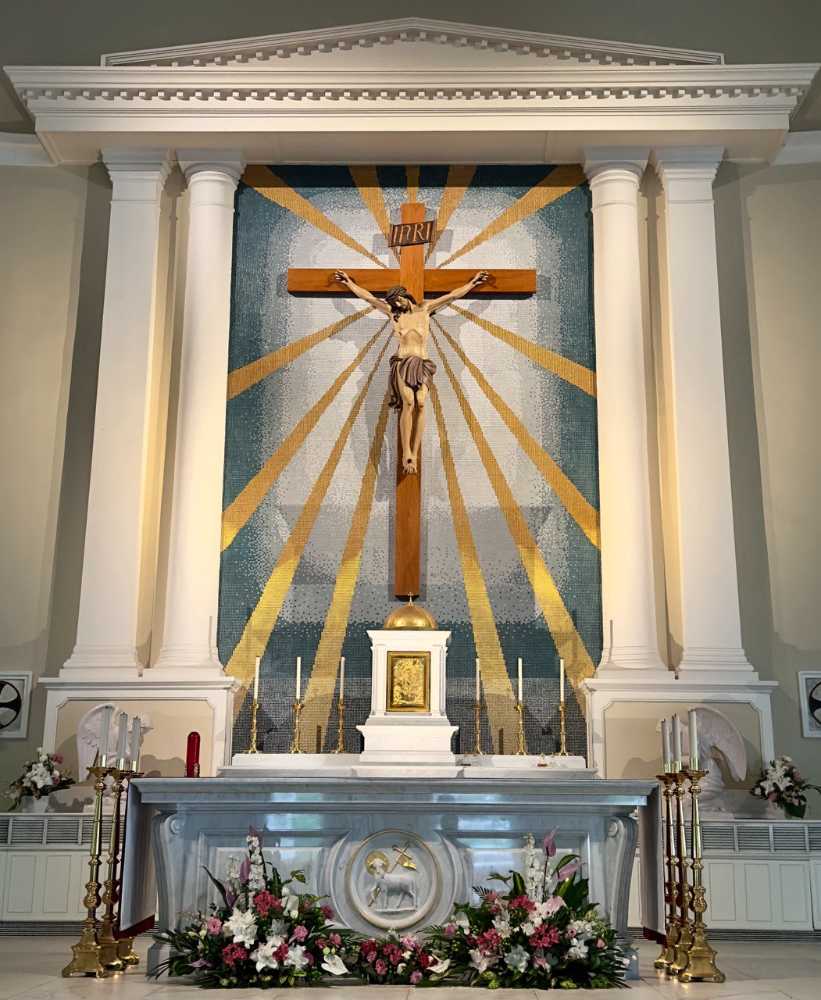 IMAGE: NG KAI
IMAGE: NG KAI
Inside, the centrepiece of the sanctuary is a large crucifix hanging against a mosaic backdrop of rays radiating from the corpus (the body of a human or animal especially when dead) of Jesus. This is framed by twin pilasters (rectangular columns) on the sides and a triangular pediment (upper part of the front of a building) above.
On each side of the sanctuary are doors leading to the sacristy, where sacred vessels and vestments used for divine worship are kept.
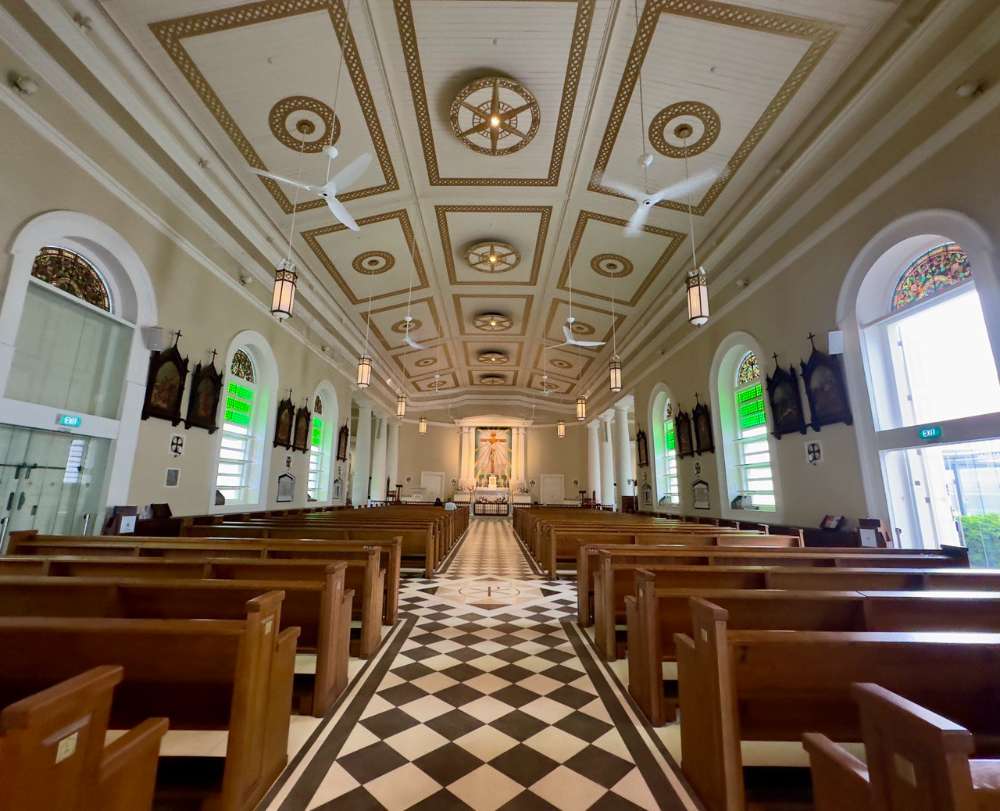 IMAGE: NG KAI
IMAGE: NG KAI
The timber ceiling is decorated with rectangular and circular patterns. Twelve crosses engraved on marble slabs can be found on the interior walls of the cathedral; they were mounted and anointed by the bishop when the building was consecrated. Numerous large windows around the church ensure that the interior is well ventilated.
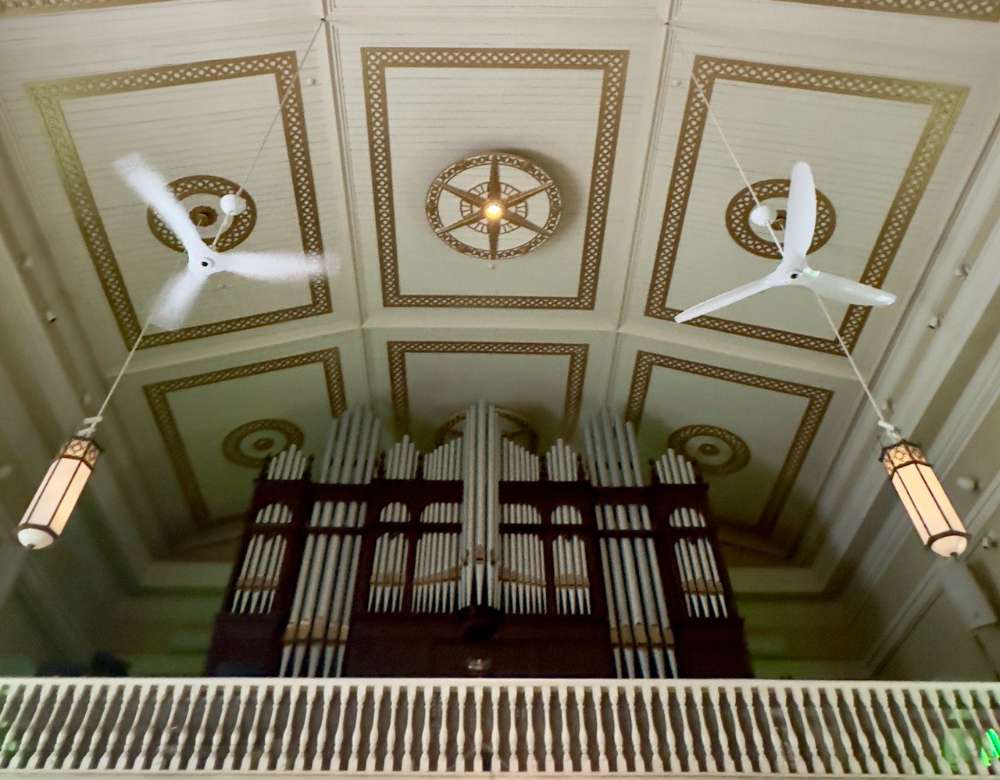 IMAGE: NG KAI
IMAGE: NG KAI
The pipe organ in the cathedral’s choir loft was installed by Bevington & Sons of London in 1912 and is Singapore’s oldest playable pipe organ.
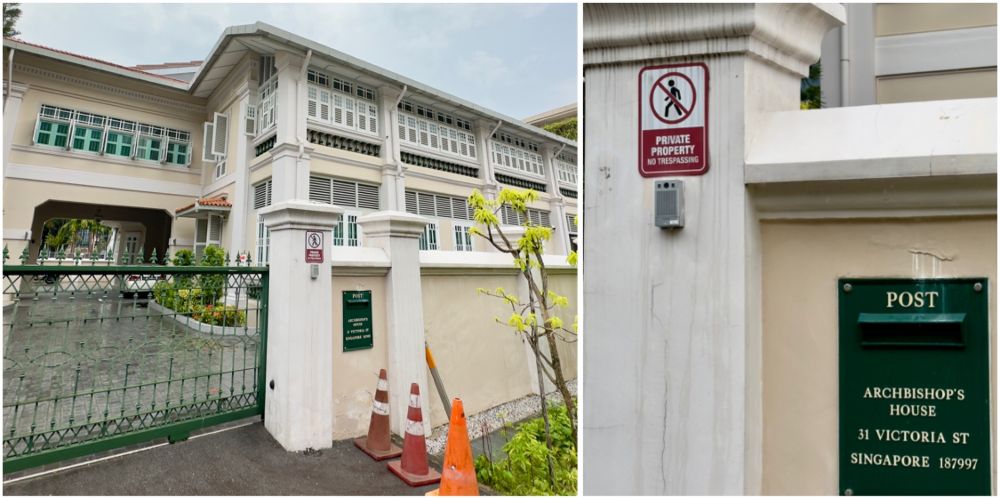 IMAGES: NG KAI
IMAGES: NG KAI
Apart from the cathedral, there are several other buildings within the compound. One of them (pictured above) is the Archbishop’s House.
🕖 Opening hours
Regular visiting hours for the main church are from 10am to 7pm on weekdays.
🎟️ Admission
Entry is free. Find out more here.
For the latest updates on Wonderwall.sg, be sure to follow us on TikTok, Telegram, Instagram, and Facebook. If you have a story idea for us, email us at [email protected].


/roundup_26_april_2024_rectangle.jpg?sfvrsn=39ffd1a7_1)

